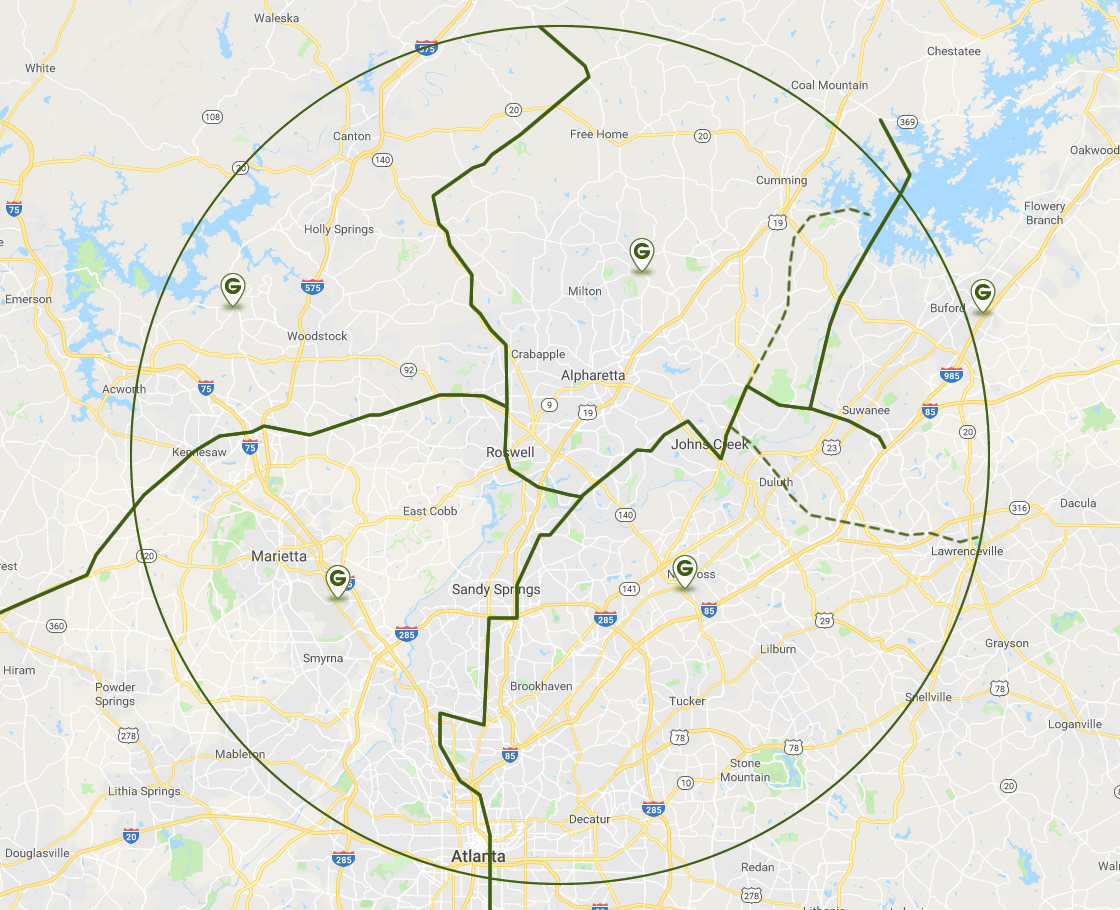Gardening Tips
- Preparing beds for spring
This can be done anytime during the winter or spring. For beds level with existing soil, roto-till soil then apply 2” of GBEW flower mix on top and roto-till again. For raised beds, simply apply 4-6” of flower mix on top of ground and plant when ready. - Preparing for seed or sod
- Fescue seed:
Only add top soil to the ground if rocky or if you need to raise the level of the ground. Aerating the ground is the best. Aerate as much as possible, the more core holes you put in the better. Lime, seed and fertilize the area. You may put down 1” of Nutra-Mulch or flower mix at this time. Rake ground or drag. Roll with a water roller to tighten up the soil. This will prevent erosion and you will have a better seed bed. Watering your grass seed regularly is essential. - Bermuda or Centipede seed:
Follow the same steps above except put the seed on last, rake lightly, roll, then cover the area with wheat straw . Watering your grass seed regularly is essential. If it dries up before germinating it will die. Not watering is the #1 cause of seed failure. - Fescue sod:
Roto-till 2-4” down, apply 2” of GBEW flower mix and roto-till again. Rake
smooth and then roll down tight. Lay sod and roll again. Fertilize, lime and water. - Bermuda or Zoysia sod:
Smooth ground, roll tight, lay sod and roll again. Fertilize, lime and water. - Centipede sod:
Smooth ground, roll tight, lay sod and roll again. DO NOT LIME. Fertilize lightly using a fertilizer with a low first number (Nitrogen), a high second number (Phosphorus), and the third number can be anything between 2-20.
- Fescue seed:
- Mulching
Mulching natural areas usually requires 2” of mulch the first and second years. Then 1” after a good base has been established. Mulching helps hold moisture to the ground and keeps weeds down to a minimum. Do not build mulch up around the base of plants. Do not pile mulch up around the base of your house. Mulch does not cause termites. Termites colonize under the ground. They swarm in the spring about the time you put down your mulch. Mulch will be a host to a lot of different insects but does not cause the problem. Putting a granular insecticide down will help. Some mulch do better on hills. Pine mulch do not do very well on hills because they are light in weight and tend to float. Shredded mulch work the best. For play areas we recommend Cypress mulch. This mulch at 4-6” deep will last approximately 3 years if kept turned every 6 months with a pitch fork. If not turned, it will last approximately one year. - Fertilizing
- Fertilizer:
1st number – Nitrogen – is your greening power, the higher the number the greener.
2nd number – Phosphorus – is for roots and blooms. 3rd number – Potash – is an overall body builder, like vitamins. - All slick leaf evergreens, i.e. Boxwoods, Azaleas, Camellias, Hollies, and Dogwoods are acid loving plants – use the appropriate type fertilizer in the spring. Follow simple instructions on the bag. Do not place fertilizer at base of plants – spread around drip line of plants.
- Fertilize flowers with high PHOSPHORUS content (the second number), i.e. Super Bloom, Miracle Grow. Fertilize every 6 weeks or as directed.
- Fertilize Fescue grass every 3 months starting in March, June, September, and December – yes, December, we usually have mild winters and this will keep your grass green and healthy.
- Bermuda and Zoysia should be fertilized every 2 months starting in March, May, July, and September. Should not be fertilized after September due to the grass going dormant.
- Fertilizer:
- Pruning
- Azaleas:
Prune in spring after blooming (within one month). Azaleas set their blooms for the next year shortly after they bloom. Therefore, prune to whatever extent and fertilize well. A light feeding in September, then again in early spring, usually every April. - Roses:
Prune back to 18” high in February. Fertilize every 6 weeks after they have started growing in spring. Prune again half way to ground (about 24”) in August, this will get rid of all insects and diseases for a beautiful fall rose. They will usually continue blooming thru late November. - Evergreen shrubs:
Prune in February or March, and again as needed throughout the summer. - Grow organically with our Flower Mix – organic soil mixture guranteed to help your plants grow their best!
- Azaleas:

